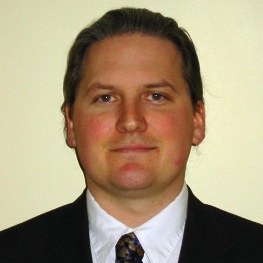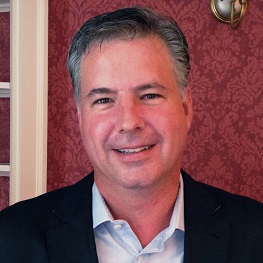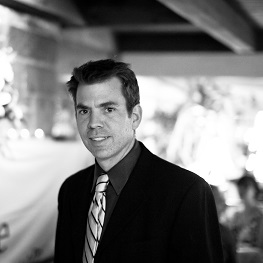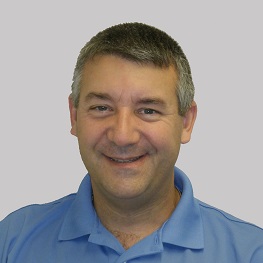Distinguished Alumni
Adam Healy
Distinguished Engineer, LSI Corporation
Adam Healey is currently a Distinguished Engineer at LSI Corporation where he supports the development and standardization of high-speed serial interface products. He received a BSEE in 1995 and a MSEE in 2000 from the University of New Hampshire and served on the technical staff of the UNH InterOperability Lab (UNH-IOL) from 1993 to 2000. During his tenure at UNH-IOL, he developed many of the test procedures and systems used to verify interoperability, performance, and compliance to standards for 10, 100, and 1000 Mb/s Ethernet products.
In the summer of 2000, Adam joined Lucent Microelectronics which later became Agere Systems and then LSI Corporation. Adam has been involved in a wide variety of projects including channel modeling and equalization strategies for high speed optical and electrical links, transcoding and error correction coding subsystems, and transport networking architecture.
Over the years Adam has made a number of significant contributions to IEEE standards. Adam was chair of the IEEE 802.3ap Task Force chartered to develop the standard for Ethernet over electrical backplanes at speeds of 1 and 10 Gb/s which enabled a new application space for Ethernet. He edited Clause 40 for the IEEE P802.3az which enabled power saving capabilities for 1000BASE-T also known as Energy Efficient Ethernet (EEE). He also served as editor-in-chief for the IEEE P802.3bj Task Force chartered to extend the Backplane Ethernet family to 100 Gb/s as well as define EEE capabilities for 40 and 100 Gb/s Ethernet. He is currently Recording Secretary for the IEEE 802.3 Working Group and chair of the IEEE P802.3bj Task Force.
Adam’s contributions to the development of industry standards are not limited to IEEE. He is an active participant in the INCITS T11.2 Fibre Channel Physical Variant task group and received the INCITS Technical Excellence award in 2010 for his contributions to 8GFC and 16GFC standards. He has also served as a liaison between INCITS T11 and IEEE 802.3. Adam was technical committee chairman and Vice President of Technology for the Ethernet Alliance during its inaugural year.
 Eric MacDonald
Eric MacDonald
Investor, Entrepreneur
Eric MacDonald (BSEE ’91) started working at the Research Computing Center (RCC) in the summer after his sophomore year. His responsibilities at that time included the maintenance and support for the Prime and DEC mini-computers, along with support of the thick-net coaxial Ethernet loops that circled “the New Science Building” (Morse Hall). As computing began to migrate from centralized architectures to distributed architectures, Local Area Networking technologies quickly emerged that required multi-vendor solutions, as a result, RCC launched the InterOperability Lab (IOL) with consortiums in 10-Base-T and FDDI. As one of the first student workers in the IOL, Eric helped do everything from pull cables, write test procedures, execute tests, and interpret the standards right along side the engineers who were developing the equipment.
After graduation in 1991, Eric began his career in enterprise networking at Cabletron Systems, where he served on the Technical Advisory Board and developed FDDI hardware. He moved to Cascade Communications in 1994 to gain exposure to the quickly emerging field of Wide Area Networking. Shortly thereafter, Eric, Bing Yang (MSEE ’92), and two other engineers at Cascade began to see an unmet need in the market to aggregate massive amounts of legacy T1 connections into the emerging ATM switching network. In the spring of 1996, they all left Cascade to start Cadia Networks. In 1997, less than a year after starting Cadia, they were acquired by Fore Systems. In 1998, Eric joined the founding team at Sycamore Networks to commercialize advanced laser technology called Dense Wave Division Multiplexing (DWDM). In 2006, Eric shifted his focus to web-based software and founded Zhura Corporation, an online social network for writers. He merged Zhura with Scripped.com in 2010.
Eric has always cited his experience at the IOL as critical to each phase of his career. Lessons he learned at the IOL about problem solving, working hard, and being customer-centric remained central to how he approached every task in his career – from getting two chips to talk to each other, to managing development teams, to selling and merging companies. Eric lives in Exeter NH with his wife and three daughters. He currently serves as the CEO of Ultimate Yearbook, an online service that creates photo-albums out of Facebook content.
Joe McEachern
CEO and Founder, QA Cafe
Joe always had an interest in computers dating back to the days of the TI-99/4A and other early home computers. Like many who started with such roots, he began tinkering and writing his own programs early on. In college, Joe majored in Electrical Engineering at Tufts University and started dabbling in computer programming before graduating. In the early 90s, Joe worked for a couple of different technology companies including New Hampshire’s own Cabletron. While working at Cabletron in 1993, Joe heard about the UNH-IOL, and, after meeting Ron Pashby at the lab, Joe was sold on the concept. He started working at the IOL and entered the Master’s Program in the Computer Science department at UNH.
Joe's experience at the IOL and UNH left a lasting impact on his career. Through exposure to IOL consortium member companies and an IOL sponsored trip to the INTEROP tradeshow in 1996, Joe landed at Ipsilon Networks in Silicon Valley as a QA Engineer. Joe fondly remembers interviewing for the job while walking around the INTEROP show floor – that was the only interview. This initial startup experience planted the seed for a future in testing technology and the drive to create a business.
During his time working in the tech sector at various companies, Joe developed his own open source software for building network packets in the Tcl scripting language called “pktsrc”. After releasing several versions of it, he noticed a need for a robust test automation platform that leveraged pktsrc, and CDRouter was born. Joe formed QA Cafe, and CDRouter became its flagship product, starting with some key customers and eventually serving nearly every company in the broadband customer premises equipment (CPE) industry, serving big names like D-Link, NETGEAR, and Cisco/Linksys.
Over the last decade, Joe has continued to develop QA Cafe's products and grow the company. Today, QA Cafe is the leader in CPE functional test. Along the way, other products have been created including CloudShark, a web based packet capture repository and analysis tool. QA Cafe has a remained a small company over the years, with 10 employees in 2012. Joe believes its size has been one of its key strengths allowing it to adapt rapidly to any market changes. The future outlook at QA Cafe remains bright with the constant evolution of networking technology.
 Ben Schultz
Ben Schultz
Lead Program Manager, TCP/IP in Microsoft for Windows OS
Ben Schultz worked at the UNH-IOL from 1998-2006 in various consortia including; Fast Ethernet, Bridge Functions, MPLS, VoIP, Routing, and IPv6. He had the opportunity to participate in Interop trade shows (Multiple years, VLANs & MPLS), OIF interop at OFC, Global MSF interop, and Moonv6. He is currently the Lead Program Manager for TCP/IP in Microsoft for the Windows OS. Ben has worked on the Windows Networking team since 2006 and is responsible for new features and scenarios in the TCP/IP stack. Examples include DirectAccess (secure corporate remote access over IPv6), high-speed/low latency server scenarios and low power client connectivity scenarios. At the UNH-IOL, Ben worked in consortiums across the OSI stack including: Fast Ethernet, Bridge Functions, MPLS, Routing, IPv6 and VoIP. Beyond consortium work, Ben and his teams initiated and successfully delivered many special projects at the UNH-IOL including building interoperability demonstrations at multiple trade shows and planning/building/hosting multiple interoperability events including optical networking, MPLS, VoIP and IPv6. The experiences at the UNH-IOL provided Ben the right mix of technical, project management and customer relations skills to launch his career.
Working at the UNH-IOL also taught Ben three sustaining lessons:
- Execute with integrity: Promise and deliver. Focus on the result.
- Be persistent: When things don't go well, think of alternative approaches. Don't give up.
- Be both curious and practical: The world is changing. Learn new technologies and new techniques. Apply them to your work. Repeat this process in an infinite loop.
Scott Valcourt
Director of Strategic Technology, UNH-IT
Scott has always loved mathematics. When the time came to decide on a college major, he wanted something in applied mathematics that would be fun. In 1988, Scott became a computer science with mathematics emphasis major at Saint Anselm College in Manchester, NH. He augmented his major courses with electives in mathematics and computer science and secured Saint Anselm’s first-ever Science and Engineering Research Semester (SERS) Department of Energy internship at Argonne National Laboratory in IL. Scott entered graduate school at UNH in 1992 and was encouraged to speak with Barry Reinhold and Dr. William Lenharth at the Research Computing Center’s InterOperability Laboratory in its fourth year of operation in Morse Hall. Scott became a student intern in the Token Ring Consortium due to his extensive Novell networking experience. In this role he examined the yet-approved IEEE 802.5 Token Ring draft standard.
After a one year stint with the UNH Controller’s Office, Scott returned in 1994 to create the 100VG-AnyLAN Consortium, earning his master’s degree in computer science while studying the technology. In the six years that followed, Scott would become one of the most entrepreneurial consortium leaders in the laboratory – leading or creating testing services and knowledgeable students in 14 different areas. Under his leadership, the IOL’s ADSL Consortium became the first to achieve one-year membership revenue exceeding $1 million. Scott was inducted into the DSL Forum (now Broadband Forum) Circle of Excellence in 2002 for his contributions to the mass-market acceptance of DSL. In 2000 upon the departure of Barry Reinhold, the first IOL director, Scott was named the second IOL director and was instrumental in the convergence of the then-five IOL facilities into the single facility at 121 Technology Drive in Durham in 2002.
After a three-year assignment as the UNH computer science department research project manager, Scott was appointed as the director of strategic technology in UNH-IT in 2007 and began the definition, creation and leadership to advance UNH’s investment in cyberinfrastructure. In this leadership role, Scott has brought over $75 million in public and private grant funds to NH to establish the fiber optic research and education networks necessary to advance next generation science and communication for education, healthcare, municipal governance, business and industry. This new regional optical network, called I-BEAM, is funded by the National Science Foundation, National Institutes of Health and the US Department of Commerce. Scott and his team wrote the grants and directed each effort. Bringing people of varied agendas together to address common needs associated with today and tomorrow is Scott Valcourt’s mission for years to come.
